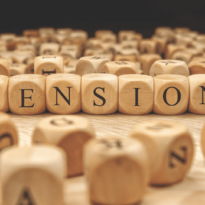UK house prices hit a record high of £282,753 in March, but are likely to cool over the next year as rising cost of living takes its toll, says Halifax.
The monthly increase of 1.4%, or £3,860 in cash terms, was the biggest jump since last September, according to Halifax’s house price index, and was driven by limited supply and strong demand.
The average house price in March was £28,113 higher than a year ago and not far off average UK earnings of £28,860 over the same period.
Two years on from the first lockdown, house prices have risen by £43,577.
Russell Galley, managing director of Halifax, said: “The story behind such strong house price inflation remains unchanged: limited supply and strong demand. Although there is some recent evidence of more homes coming onto the market, the fundamental issue remains that too many buyers are chasing too few properties.”
However, Halifax said the cost of living crisis, with UK households facing soaring energy and food bills, combined with rising interest rates, could lead to a slowdown in house price growth over the next year.
Galley added: “In the long-term we know the performance of the housing market remains inextricably linked to the health of the wider economy. There is no doubt that households face a significant squeeze on real earnings and the difficulty for policy-makers in needing to support the economy yet contain inflation is now even more acute because of the impact of the war in Ukraine.
“Buyers are therefore dealing with the prospect of higher interest rates and a higher cost of living. With affordability metrics already extremely stretched, these factors should lead to a slowdown in house price inflation over the next year.”
Charlotte Nixon, mortgage expert at Quilter, said: “House prices have remained robust for yet another month and are continuing to defy expectations as we navigate these extraordinary times. At present, despite the financial squeeze many are beginning to feel, this growth is continuing to be propelled by strong demand and too little housing stock.
“However, the current circumstances are expected to put the brakes on runaway house prices. The situation in Ukraine remains unstable and the cost of living crisis is being felt increasingly by the day, particularly as the energy price cap and national insurance increase have both now come into play. Given the increased financial instability, first time buyers and prospective home movers will likely think twice before embarking on the expensive process of buying a new home.”
The Bank of England is expected to increase interest rates further to combat spiralling inflation, which will also reduce people’s spending power. This will likely reduce the number of cheap mortgage rates available, while monthly costs will rise.
Nixon said: “Over the next few months, we will see how the housing market truly reacts to the current circumstances but it is unlikely house prices will continue rising at the same pace seen in recent times. If we do see a slowdown, there will likely be a gradual fall as opposed to a sudden drop as there remains simply too much demand and too little stock which will keep house prices raised for some time yet.”
Longer term mortgages
The record high house prices came as Quilter warned that the Government’s stamp duty holiday had triggered a surge in the number of 35-year plus mortgages, leaving many homeowners vulnerable to higher costs over the long term.
The government’s stamp duty holiday was first introduced in July 2020 at the height of the pandemic and withdrawn in two stages – June and September 2021.
A freedom of information request by wealth manager Quilter found that at both withdrawal stages, the number of 35+ year mortgages sold jumped considerably.
In June 2021, a total of 35,046 mortgages were sold with a term of 35+ years, up 209% on the same period of 2020. In September 2021, a further 28,112 35+ years mortgages were taken out, marking a 73% increase compared with September 2020.
However, Quilter has warned that the opportunity to purchase a larger, more expensive house as a result of the stamp duty holiday suggests that many have opted to take out a longer mortgage term that they otherwise would have. Despite the savings made on stamp duty, entering a mortgage term of 35 or more years will be costly given the amount of interest that will be paid over the duration of the term.
Nixon said: “The lure of the stamp duty holiday was strong, particularly as it came at a time when many people had built up extra savings due to the lockdown. While many jumped at the opportunity to save on stamp duty, they may well now be stuck in long mortgages that will cost them considerably more in the long term.”
Nixon says those who purchased a house for the average house price in June and September 2021 saved £3,283 and £2,499 on stamp duty costs respectively, and to take advantage of this saving many had to opt for a longer mortgage term to ensure it was affordable. However, had they held off until they could afford a standard length mortgage, they could well have saved themselves a lot more money in the long run than just the stamp duty savings.
An example, provide by Quilter showed that the overall cost of a 35-year mortgage term on the average home in September 2021, with a 15% deposit and a 2% interest rate, would have been £383,732. But had the same property purchase been made with a 25-year mortgage term, the overall cost would have been £311,220 – a huge saving of £72,512.
Nixon added: “The overall cost of a 35+ year mortgage may well have been an afterthought for those looking to take advantage of the scheme, particularly when rushing to meet the withdrawal deadlines. However, rushing to buy will not have resulted in the savings many believed they were securing, as they will now be faced with the cost of interest for the duration of a longer mortgage term.”
[Main image: lukas-skoe-_4BKcFKKI1k-unsplash]






























